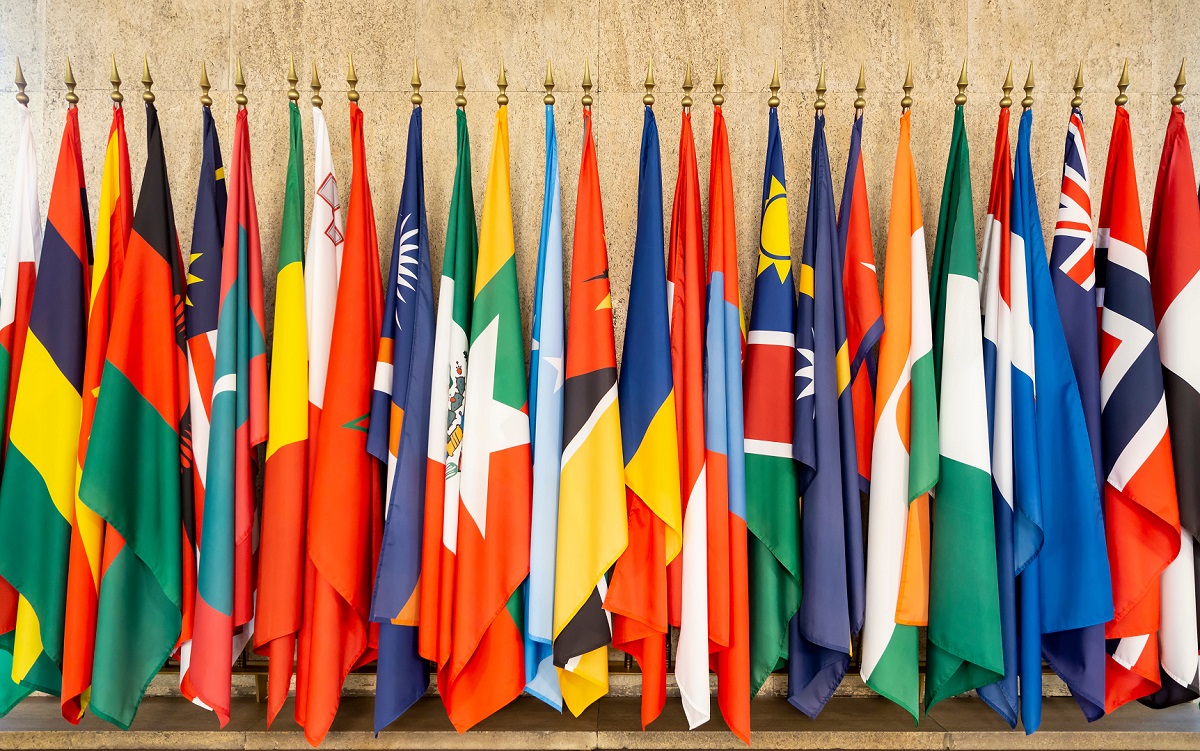The world is facing a climate emergency, and additional financing is sorely needed to ensure that global temperatures do not rise by more than 1.5 degrees. In response to this need, since 2009, developed countries have committed to mobilise $100 billion in climate finance by 2020, and as of 2018, had reached $79 billion according to the OECD. This paper focuses on the bilateral climate finance proportion of this figure, amounting to $30b. The majority of DAC members use the OECD Rio markers as one way of tracking their bilateral climate finance when reporting to UNFCCC. However, these markers have come under considerable criticism. In this blog we take a closer look at what is behind the rise in aid marked as having a mitigation objective, and argue that much of the recent increase in mitigation-marked spending comes not from new activities, but through re-labelling existing activity. This might result from “climate-mainstreaming” adapting more projects to make sure they are consistent with mitigation goals. This might be a good thing, but it is not the same as new finance specifically targeted for climate action.
Twin challenges: Poverty reduction and climate change
For bilateral official development assistance (ODA), the main tool for tracking the amount spent on climate mitigation is the “mitigation marker,” one of a suite of markers introduced in 1998 to track the flows of development finance towards objectives of the Rio Conventions (tackling climate change, desertification, and protecting biodiversity). According to this marker, the share of ODA spent on climate mitigation has risen substantially. For the least developed countries, the share of ODA they receive that has a climate-mitigation focus has risen from less than 1 percent in 2006, to around 8 percent in 2018. But this rise hasn’t been accompanied by a notable increase in ODA, suggesting that this is not additional, but a shift in resources.
Figure 1. Share of bilateral ODA from DAC with climate-mitigation focus (principal and significant), by income group
This is concerning for people who view it as unfair to use the scarce resources intended to reduce poverty to fix a problem mainly created by wealthier, donor countries (note, this does not include finance for adaptation). Even on wildly optimistic growth projections, the poorest countries will account for a tiny share of future emissions, and have pressing poverty needs that are likely to have increased since the COVID-19 pandemic.
However, is this a genuine shift in activity, or does it signify donors simply trying to claim additional “climate-credit” for previous activities?
However, is this a genuine shift in activity, or does it signify donors simply trying to claim additional “climate-credit” for previous activities? If the former, then climate finance could be eating into the resources available to help poorer countries develop. If the latter, this could mean that climate finance has not increased as much as we think, and not fast enough to deal with an ever-more-urgent problem. Which is being short-changed: attempts to address climate change, poverty reduction, or both?
Purpose codes and markers
The first (suggestive) piece of evidence comes from examining the types of activity funded by “climate-marked” ODA. For every aid transaction in the Creditor Reporting System (CRS)—where donors report aid flows—there is an associated “purpose code” that denotes the type of activity funded. Some of these types of activities are clearly relevant for climate mitigation, such as wind or solar energy (purpose codes 23240 and 23230 respectively). If there has been a genuine shift towards mitigation finance, we might expect that these purpose codes see the largest increase.
Relevant purpose codes
| Purpose code | Description |
|---|---|
| 23181 | Energy education/training |
| 31282 | Forestry research |
| 23183 | Energy conservation and demand-side efficiency |
| 23210 | Energy generation, renewable sources - multiple technologies |
| 23220 | Hydro-electric power plants |
| 23230 | Solar energy |
| 23240 | Wind energy |
| 23250 | Marine energy |
| 23260 | Geothermal energy |
| 23270 | Biofuel-fired power plants |
| 23510 | Nuclear energy electric power plants |
However, others may be indirectly relevant, or have mitigation-benefits even if it is not their main focus: perhaps activities under “financial policy and administrative management” (purpose code 24010) help to reduce emissions by channelling investment to greener projects. Some that appear to be actively detrimental to the mitigation cause—such as “coal-fired power plants” (purpose code 23320) that accounted for 3 precent of mitigation-focused ODA between 2017 and 2018— *might* justifiably be marked if such spending is aimed at increasing efficiency, such as adopting “ultra-supercritical technology” (although this is contested).
Therefore, although we use a list of 11 purpose codes (out of 223) that seem especially relevant to climate change (taken from Gavas et al), we also use a list of seven key words (“green,” “climate,” “emission(s),” “renewable,” “solar,” “wind,” and “eco”—we tried variations on this list, but none changed the overall trend) to identify projects that should be relevant to mitigation from their project description. Figure 2 tracks the share of bilateral ODA that meets any of these three criteria: (1) does the project description contain relevant keywords, (2) is the ODA marked as having mitigation as a principal or significant objective, (3) is the purpose code particularly relevant to climate change?
Figure 2. Share of bilateral aid with climate mitigation: purpose codes, marker, and key words
Note: Categories are not exclusive, i.e. some ODA with key words in project description may also have a mitigation related purpose code (purpose codes included: 23181,31282,23183,23210,23220,23230,23240,23250,23260,23270,23510). We tried the inclusion of several different words but none changed the trend outlined in the graph
Source: CRS, authors’ analysis
Since 2010, the share of mitigation-marked ODA stands out: it has nearly doubled since 2010 (from 7.8 percent to 13.2 percent) whereas the other two measures have either declined or remained flat. In other words, whereas donors are marking far more of their ODA as having mitigation as a principal or significant focus, there has been no switch to activities particularly relevant to mitigation, and nor has there been a noticeable increase in “green words” in project descriptions.
This does not necessarily mean that ODA is being re-badged: it is possible that this demonstrates climate being “mainstreamed” into ODA—that more and more projects (including existing ones) are being adapted to try and make the most of mitigation co-benefits. This might be a good thing, but it is not the same as new financing.
Generally, the increase in mitigation-marked ODA has come less from switching between purposes (for example from “oil-fired electric power plants” to “wind energy”), but from an increase in mitigation-marked ODA within purposes. On average, the share of mitigation-marked spend within each purpose code was 9 percent in 2006, and this rose to 28 percent in 2016. The median share of mitigation-marked spend across purpose codes increased from 1 percent to 11 percent.
This does not necessarily mean that ODA is being re-badged: it is possible that this demonstrates climate being “mainstreamed” into ODA—that more and more projects (including existing ones) are being adapted to try and make the most of mitigation co-benefits. This might be a good thing, but it is not the same as new financing. At most, some fraction of each project could be counted as new (the money spent over and above what the project would have cost if climate mitigation was not a concern).
Projects changing focus mid-implementation
Finally, there appear to be several examples in the CRS in which projects seem to have shifted focus—dramatically—part way through. These are hard to identify, both because of inconsistent use of unique identifiers, and because the same project might be entered slightly differently between years, for example “India MRT project” for one entry and “India Metro-Rail-Transport project” for another. However, several examples are worth exploring.
UK — CDC
The UK’s development finance institution, CDC, had zero climate-mitigation focus before 2015, as measured by the Rio markers. After 2015, this changed abruptly, and in 2018 100 percent of contributions to CDC were marked as having a “significant” climate-mitigation objective.
It is true that the CDC did change its priority over this period: its investment data suggests a switch towards solar and wind infrastructure (for example) in the 2010s; in 2014, CDC committed to “considering climate change in every investment” and more recently has published a full climate strategy. There was also a change in how CDC contributions were recorded (prior to 2015 ODA was recorded when CDC purchased equity, but now it is recorded as and when more capital is committed to CDC) which made it impossible to assess individual projects, requiring the portfolio to be assessed as a whole. This highlights one of the main challenges with the Rio marker methodology often mentioned in the literature: it lacks granularity (e.g. Weikmans et al, 2017). Once a project has a significant or principal climate target, the whole cost of the project is recorded, rather than only the component that addresses climate.
All the same, the result is that the percentage of CDC’s portfolio judged to have a climate focus went from zero to 100 percent in only a few years, adding $950 million to climate mitigation disbursements according to the CRS. This probably understates previous climate activity and overstates current. Either way, it would imply the increase in climate mitigation finance is less than at first seems (although the UK’s latest submission to UNFCCC only includes a fraction of CDC commitments, it didn’t include any in previous).
Japan — Mass transit in Bangkok
Between 2016 and 2018, 14 percent of all ODA disbursements (from any country) with a mitigation focus were accounted for by investments in the rail sector in various cities by Japan (and 18 percent of disbursements with a principal focus). One such project is a railway project in Bangkok. After a small initial disbursement in 2009 which had a principal climate focus, the project had no climate focus for several years. Then after 2012, the percentage of disbursements with a “principal” climate focus gradually increased, to 100 percent by 2015. Throughout this project, the description remained the same (to mitigate or alleviate traffic congestion) and yet the principal focus flipped throughout. Between 2016 and 2018, this project accounted for 4 percent of total disbursements with a mitigation focus.
Again, this project surely does have mitigation benefits: investing in rail has substantial potential to reduce transport emissions. However, comparing 2010-2012 to 2016-2018, the total amount of finance provided for this project increased by around half a billion USD (from $548 billion in the earlier period, to $965 billion in the later period). But because (nearly) none of the disbursements in 2010-2012 were marked as having a mitigation objective, and all of the disbursements in 2016-2018 were marked as such, the re-labelling makes it appear as if climate mitigation finance has increased by the full $965 billion, around twice the actual increase.
UK — Khyber Pukhtunkhwa education sector programme (budget support)
While on a smaller scale, perhaps an even stranger story is that of a UK education project in Pakistan. This project aims to improve primary and secondary education in a region of Pakistan, with financial aid and technical assistance.
Figure 5. UK — Disbursements to “Khyber Pukhtunkhwa education sector programme (Budget support)” programme (USD, million)
While this education project may well be worthwhile, it is not clear how it relates to climate mitigation. Certainly, despite being marked as having climate mitigation as a “significant” objective since 2015, there is no mention of mitigation in any of the project descriptions or the business case. The UK’s UNFCCC return for the fourth Biennial Assessment only includes $4.3m climate-specific for this project for 2017, or just over 10 percent of its total in 2017, and so the graph above cannot be interpreted as the extent to which mitigation finance is exaggerated. However, the fact that this project was not listed in previous submissions despite being ongoing at the time suggests a tendency to search for additional activities to label as mitigation finance.
Japan — Dedicated freight corridor
As well as projects that have been re-labelled halfway through, there are also projects that have been consistently labelled, but where the labels don’t match project descriptions. One such example is an investment by Japan in a “dedicated freight corridor” in India, worth $422 million in 2018, and for which most disbursements are marked as having a “principal” mitigation objective. The Rio-Marker Handbook is clear that mitigation must be “explicitly stated as fundamental in the design of, or the motivation for, the activity.” However, in the summary page for this project (see, e.g., here or here) there is no mention of any climate goals: instead, economic development is (justifiably) given as the main objective.
Win-win?
As the case of rail transport shows, it is often possible to motivate projects on both climate mitigation grounds and on the economic benefits. Is it not, therefore, legitimate for donors to seek credit for both when funding such win-win projects? This might be the case, but our CGD colleagues have previously shown that attempts to address climate mitigation and poverty reduction simultaneously often do neither as effectively as tackling both separately.
However, this also demonstrates that it is hard to draw a clear dividing line between projects with mitigation as “significant” or even “principal” objective, and those that would be worthwhile just on the basis of local social or economic returns. Given the scale of ODA, and the apparent ease of switching between objectives within the same activities, there is clearly significant scope to “increase” climate mitigation without any real change in behaviour.
What does this mean for the $100 billion target?
According to the latest figures, climate finance from developed countries was $79 billion in 2018. Approximately 40 percent of this figure is accounted for by bilateral climate finance, which is mostly measured using the markers, amounting to $33 billion. The above analysis therefore puts a serious question mark above donors’ current progress towards this commitment. Though we have considered disbursements, the inconsistencies will surely apply to commitment figures as well (some countries report either commitment or disbursement data against the target, others report both (OECD, 2015), but for countries such as the UK that mostly use grants, the difference should be small).
The concern that previous ODA spending is being re-labelled as climate finance has been raised previously (e.g. Stadelmann et al, 2010; Michaelowa et al, 2011). The evidence seems clear that while climate markers may be helpful in indicating which projects may have mitigation co-benefits, they are less useful in tracking new mobilised finance targeted for climate action specifically. This is a problem given that most donors—including Japan—rely on the Rio markers to report their progress towards the $100 billion target. This illustrates that more data must be made available to ensure that projects that are being categorised as climate-related are actually enabling climate action that would not have happened previously, and that neither climate change nor poverty reduction are being short-changed. This week, CGD will host an event to discuss the progress that has been made towards the $100 billion climate finance target, and look at how providers could change their approach to climate finance to ensure it is effective in addressing these twin challenges.
Disclaimer
CGD blog posts reflect the views of the authors, drawing on prior research and experience in their areas of expertise. CGD is a nonpartisan, independent organization and does not take institutional positions.





